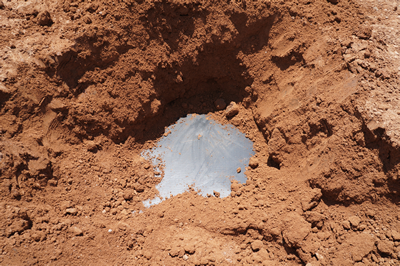Phobias make for interesting “rabbit hole” reading. Once you find a classical-looking, not-easily-pronounced, gigantic word—apologies to speakers of Greek—it becomes pretty easy to just keep clicking in search of more things you might start fearing if you don’t fear them (rationally) already.
Phobias, however common, can complicate career choices. Hemophobia (fear of blood) would make a career as a surgeon unlikely. Acrophobia (fear of heights) would not inspire tremendous confidence in a pilot.
What phobias might complicate civil and geotechnical engineering careers? The broadness of engineering work and the responsibilities that come with the work put a great many fears in play. Here are a couple handfuls of phobias (in alpha order) to send you down the rabbit hole.
10 PHOBIAS THAT ENGINEERS HOPE TO AVOID
Aichmophobia – Fear of sharp, pointed objects. Offhand, this sounds like a perfectly reasonable fear. No one wants to be impaled, cut, etc. (Let’s not investigate opposing philias.) Aichmophobia, however, extends to more than swords and spears. In its worst manifestation, it includes pencils, pens, scissors, and any other common implement with a point. It’s a digital world, yes, but you will have to get a little graphite and ink on you along the way.
Atychiphobia – Fear of being wrong. Engineers are often said to view the world as black and white. That’s really not a bad thing. When you are tasked with designing structures, reviewing designs, monitoring construction, etc., you can’t effectively do your job if it is mired in doubt. “I think it will work” is never what the client wants to hear! Some will call engineers stubborn based upon the firmness of their opinions in the field; but, think of that “stubbornness” more as a matter of certainty, thoroughness, and trust. In your personal lives, though, you will need to be a little more flexible.
Cleithrophobia and Claustrophobia – Fear of tight spaces/being trapped. There are just too many situations in engineering and construction in which one might have to enter a tunnel, descend into an underground mine, and so forth. These are very common phobias, including among engineers. They are quite manageable. But, that doesn’t make them comfortable to deal with, nor does it ensure one won’t be distracted in a critical decision-making process.
Cloacaphobia – Fear of sewers. Totally understandable! Geosynthetica’s editor grew up 600 feet from a sewage treatment plant. BUT, engineers have to visit some pretty funky places in their careers. Sewage treatment is a major piece of infrastructure. An assignment might find you 40 ft. below the surface evaluating a sewage tunnel lining system. So while we all will understand a strong dislike of working in these environments, we need you to accept it and focus without fear. Glove up!
Gephyrophobia – Fear of bridges. Sure, you can quite comfortably perform geotechnical work, including designing bridge footings, without ever having to really confront a fear of bridges on a job. There’s no requirement to cross the bridge yourself. BUT, this is a pretty tough phobia to avoid kicking off if you suffer it. Travel is inevitably part of the work. So, your designs may not suffer, but you’ll encounter plenty of focus-sapping anxiety with this phobia.
Mysophobia – Fear of germs/dirt. Even high-level researchers with an army of grad students to send into harm’s way are going to get their boots dirty at some point. You will not likely get a year into a career in engineering without someone sending you into the muck. Get used to it, or transition into a career in clean room technologies.
Nomophobia – Fear of being without a mobile device. Is technology too much of a crutch now? Nomophobia is definitely a phobia that has emerged in modern life. Yes, engineering is heavily wedded to technology. That’s the nature of the profession, as it continuously seeks to improve. But, being incapable of adjusting to a moment without a device would be a little tragic. We don’t have to revert to slide rules, but we’ve got to have a foundation of the very knowledge programmers install in our devices to aid us in calculations and designs.
Thanatophobia – Fear of death. This is, in our opinion, the most understandable and common fear in life, let alone in engineering. So: why include it? It pairs well, and dangerously, with the above-mentioned atychiphobia (fear of being wrong). Especially on the design side, engineers are strongly concerned with the safety of people who interact with the structures the engineer has been responsible for. The pedestrians who use a foot bridge over a highway. The train passengers on a railway passing over an embankment on soft soil. Engineers are, quite honestly, some of the most caring individuals the editor here has ever met. You are a stubborn lot, yes. But, you are deeply concerned with safety. Perhaps, then, we should file thanatophobia under an advantage for an engineer. It may make you better at your work.
Trypophobia – Fear of holes. Many people seem to have discovered this about themselves do to smartphone camera lenses. This has led some to question whether trypophobia is a real phobia, since it is increasingly applied well outside of giant holes (like a quarry). Without question, though, some people really do suffer a clear disgust from the sight of certain types of holes, patterns, and irregular markings on the surface of things. Maybe it’s actually another of the modern phobias, but safe to say it would make engineering work uncomfortable if not crippling, depending on the degree to which you might suffer it.













